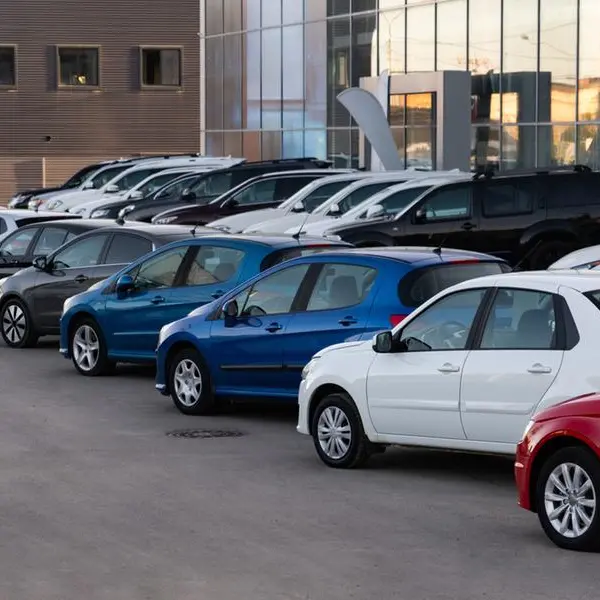E-COMMERCE: SHIFTING THE RIVER OF ECONOMIC DEMAND
On a fundamental level, our economy is driven by demand, and every part of the system is built to satisfy that demand. An analogy we have used on our team is to think of demand as a river. Over seasons, the river might ebb and flow in strength and volume, but it never fully ceases, and where the river goes, life and biodiversity follow. The same is true with demand in an economy—where there is demand, there is opportunity, leading to innovation, growth and prosperity.
With gravity the river flows downhill, but the path it follows may alter over time due to disruption, bringing life to new areas while leaving the original riverbed dry. For centuries, humans have used technology to divert rivers, either partially or completely, for their benefit. Similarly, the “gravitational force” of greater convenience has guided demand in the consumer economy, but it is e-commerce that has fundamentally disrupted the economy’s trajectory. E-commerce has created new profit pools, as demand has been meaningfully channeled away from historical patterns.
Some of these technological advancements are so dramatic that they can rapidly shift huge portions of demand to a completely new market, leaving old markets reeling. Take, for example, the advent and rise of the ridesharing business model, which sparked protests nationwide as traditional taxi drivers saw their business decline 75% from less than a decade ago.1
Human intervention is not the only way to alter the path of the river—nature can as well. Consider the lasting and dramatic effect the COVID-19 pandemic is having on the economy and consumer habits. Though globally devastating, the pandemic has been a tailwind for e-commerce at a level unseen since the advent of mobile phones. In a matter of months, the pandemic catapulted the industry forward, accelerating the adoption of online shopping, 4 digital communications, website creation and other industry trends at a pace that had previously taken years. If nothing else, COVID-19 serves as a testament to our adaptability, as we are seeing e-commerce expand in remarkable and ingenious ways.
Today, the range of goods and services that can be obtained virtually is dizzying. Of course, cleaning supplies, toys, books, clothing, tools, furniture, cars and groceries are well-represented and available. However, offerings have expanded to include services such as virtual veterinarians, e-learning, digital exercise classes with a social media element, at-home blockbuster movie launches, malls in the metaverse, virtual dating, online live concerts, and new browsing experiences designed for discovery. Or, as one company puts it in their “S-1,” combining “Costco and Disneyland” into one’s shopping experience. We see opportunities everywhere, and yet, consumers have only begun to tap the potential of this new global digital marketplace.
As investors and students of innovation, we are constantly looking for change. We are dispassionately appreciative that we cannot change the flow of the river—but we can potentially profit from it. We view change as inevitable, and disruption as indicative of an opportunity ahead.
HOW THE EVOLUTION OF THE INTERNET IMPACTED THE DEVELOPMENT OF E-COMMERCE ECOSYSTEMS
We are witnessing a sizable and lasting shift to e-commerce across the economy, a movement entirely catalyzed by a single, revolutionary technological advancement—the emergence of the internet. The internet made it possible for businesses and individuals to buy and sell items and services online, and in a very short period of time, consumers had the convenience of almost unlimited selection available to them from the comfort of their homes, 24/7, with just a few clicks of a button.
Books were one of the earliest categories of items sold online and were in fact the only thing Amazon sold when it went public in 1997. Books were a logical starting category for online retail, as they are mostly the same size, easy to ship, simple to describe using typeface, and a category where virtually unlimited selection mattered. More importantly, books were easy to sell within the constraints of dial-up internet. All of the early pioneers of e-commerce, whether that was Amazon, eBay, Craigslist, or Etsy, relied on simple web pages that were typically less than 1 megabytes (MB) in size to describe and sell their product. Dial-up service, while slow, was sufficient to load these web pages. It was only as internet technology evolved from dial-up service to coaxial cable and fiber that we saw the expansion of e-commerce into many more categories. This included video streaming like Netflix and YouTube, video advertisements through platforms such as Facebook and Instagram, video calling with Zoom and Microsoft Teams, online education, cloud services, and many others. All of what we know as e-commerce today was only made possible by the existence and development of the internet, and increasing internet speeds led to expanding possibilities.
However, in its infancy, the internet, and thus e-commerce, was not available to all households. Even in 2007, less than 50% of adult Americans had a broadband connection at home.2 The invention of the smartphone, or basically a pocket computer, allowed anyone anywhere to be connected online. Smartphone penetration grew rapidly from less than 11% of the US population in 2007,3 when the iPhone first launched, to over 80% today.4
NEARLY THREE QUARTERS OF E-COMMERCE PURCHASES ARE MADE WITH A MOBILE DEVICE
Exhibit 1: Global Mobile Commerce as a Share of Total Global E-commerce
As of February 9, 2021





















